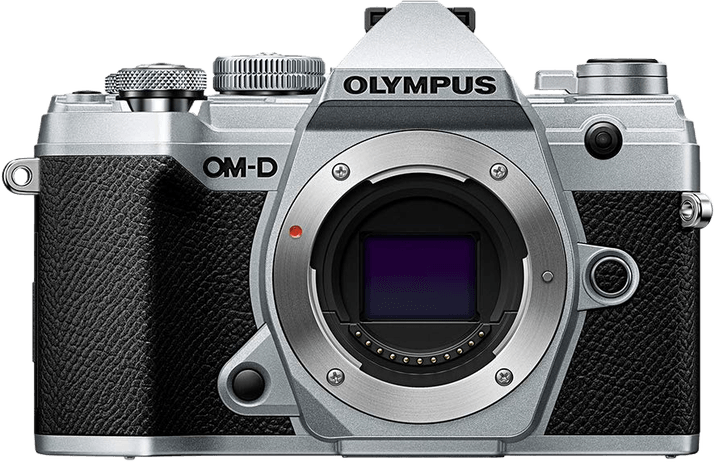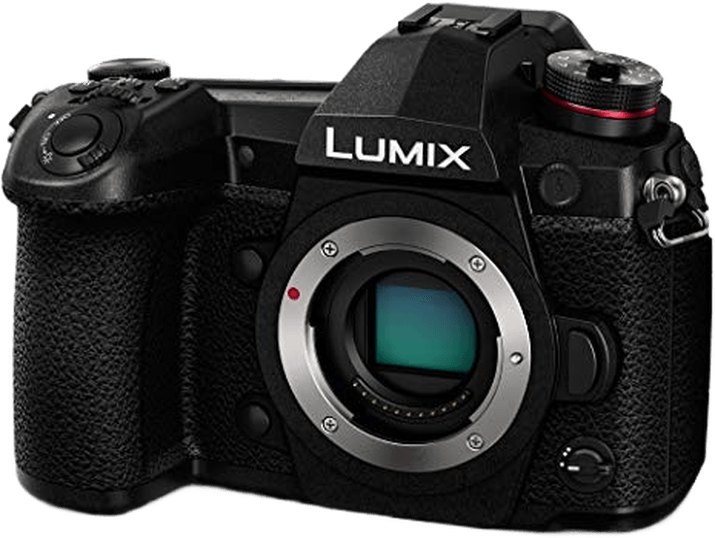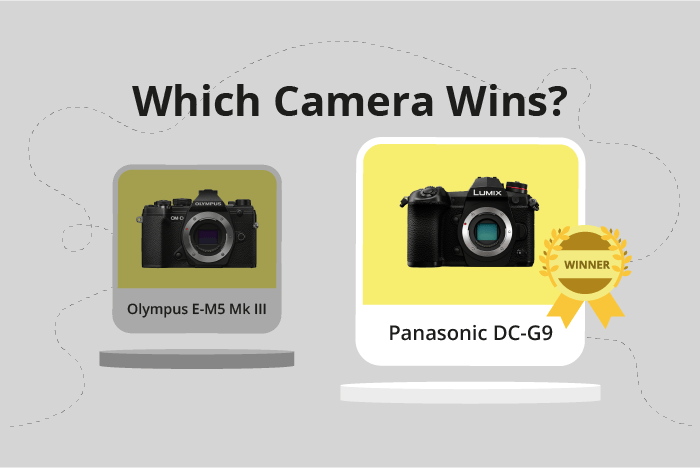Olympus OM-D E-M5 Mark III vs Panasonic Lumix DC-G9 Comparison
Olympus OM-D E-M5 Mark III

Panasonic Lumix DC-G9

The Panasonic Lumix DC-G9 outperforms the Olympus OM-D E-M5 Mark III with a score of 70/100 compared to 65/100. Both cameras are mirrorless and were released in 2017 and 2019, respectively. They share similarities in camera type and launch prices of $1699 for the Lumix DC-G9 and $1199 for the OM-D E-M5 Mark III.
The Lumix DC-G9 excels with its higher score, offering better overall performance. However, the OM-D E-M5 Mark III has its advantages, such as being lighter at 414g compared to the Lumix DC-G9’s 658g. Additionally, the OM-D E-M5 Mark III is more compact, measuring 125 x 85 x 50mm, while the Lumix DC-G9 is larger at 137 x 97 x 92mm.
Taking these factors into account, the Panasonic Lumix DC-G9 stands out as the superior camera, but the Olympus OM-D E-M5 Mark III is a strong contender for those seeking a lighter and more compact option.
Olympus OM-D E-M5 Mark III vs Panasonic Lumix DC-G9 Overview and Optics
The Panasonic Lumix DC-G9 outperforms the Olympus OM-D E-M5 Mark III in optics, scoring 65/100 compared to the Olympus’ 60/100. Both cameras share several specifications, including 20-megapixel resolution, CMOS sensor type, Micro Four Thirds sensor size, Micro 4/3 lens mount, and image stabilization.
The Lumix DC-G9 takes the lead with a higher DXOMARK score for the sensor, 71 compared to the E-M5 Mark III’s 55. This higher score means that the G9’s sensor provides better image quality and low-light performance. Additionally, the G9 uses the Venus Engine processor, which contributes to the camera’s overall image processing capabilities.
On the other hand, the Olympus E-M5 Mark III has a faster shooting speed of 30 frames per second (fps), compared to the G9’s 20 fps. This faster shooting speed allows the E-M5 Mark III to capture fast-moving subjects and action shots more effectively. The E-M5 Mark III also utilizes the TruePic VIII processor, which aids in producing high-quality images.
Despite the Olympus E-M5 Mark III’s advantage in shooting speed, the Panasonic Lumix DC-G9 proves to be a better camera in terms of optics, due to its superior sensor performance and image processing capabilities. However, the E-M5 Mark III remains a viable option for photographers who prioritize fast shooting speed. Ultimately, the choice between these two cameras comes down to the specific needs and preferences of the photographer.
Olympus OM-D E-M5 Mark III vs Panasonic Lumix DC-G9 Video Performance
The Olympus OM-D E-M5 Mark III outperforms the Panasonic Lumix DC-G9 in video capabilities with a score of 91/100 compared to the G9’s 83/100. Both cameras share 4K video resolution and built-in time-lapse functionality, but there are notable differences that contribute to the E-M5 Mark III’s superiority.
The E-M5 Mark III has a higher maximum video dimension of 4096 x 2160, while the G9’s maximum is 3840 x 2160. This difference in dimensions allows the E-M5 Mark III to produce videos with more detail and clarity. Additionally, the E-M5 Mark III boasts a maximum video frame rate of 120fps, doubling the G9’s 60fps. This higher frame rate enables the E-M5 Mark III to capture smooth slow-motion footage, which is particularly useful for sports and action videography.
On the other hand, the Panasonic Lumix DC-G9 still offers strong video capabilities despite its lower score. Its 4K video resolution and time-lapse functionality are on par with the E-M5 Mark III, making it a viable option for those who prioritize video features in their camera selection. However, its lower maximum video dimensions and frame rate may be limiting factors for some users.
Comparing the Olympus OM-D E-M5 Mark III and the Panasonic Lumix DC-G9, it is clear that the E-M5 Mark III is the superior choice for video capabilities, due to its higher maximum video dimensions and frame rate. While the G9 remains a solid option, users seeking the best video performance should opt for the E-M5 Mark III.
Olympus OM-D E-M5 Mark III vs Panasonic Lumix DC-G9 Features and Benefits
The Olympus OM-D E-M5 Mark III and the Panasonic Lumix DC-G9 both have a feature score of 83/100, making them equal in this aspect. They share common specifications, such as a 3-inch screen size, 1040000-dot screen resolution, touchscreen capability, flip screen, and the absence of GPS. Additionally, both cameras are equipped with WIFI and Bluetooth connectivity.
The Olympus OM-D E-M5 Mark III excels in its compact size and lightweight design, making it more portable and convenient for travel photography. This advantage allows users to carry the camera effortlessly during long shooting sessions or adventures.
On the other hand, the Panasonic Lumix DC-G9 stands out with its high-speed shooting capabilities and impressive image stabilization system. These features make the G9 a strong choice for action and sports photography, where capturing fast-moving subjects is essential.
Given these differences, the Olympus OM-D E-M5 Mark III is the better choice for those who prioritize portability and convenience, while the Panasonic Lumix DC-G9 is ideal for photographers focusing on action and sports. Both cameras have their strengths, and the choice ultimately depends on the needs and preferences of the user.
Olympus OM-D E-M5 Mark III vs Panasonic Lumix DC-G9 Storage and Battery
The Panasonic Lumix DC-G9 outperforms the Olympus OM-D E-M5 Mark III in storage and battery with a score of 71 to 35. Both cameras accept SD, SDHC, and SDXC memory cards and are UHS-II compatible. Additionally, they both have USB charging capabilities.
The Lumix DC-G9 has an advantage with two memory card slots, providing more storage flexibility. It also offers a longer battery life of 400 shots, compared to the E-M5 Mark III’s 310 shots. The Olympus E-M5 Mark III, however, does not have any notable advantages in this category.
As a result, the Lumix DC-G9 proves to be the superior option in terms of storage and battery capacity, making it a more reliable choice for extended shooting sessions and professional usage.
Alternatives to the Olympus OM-D E-M5 Mark III and Panasonic Lumix DC-G9
Are you still undecided about which camera is right for you? Have a look at these popular comparisons that feature the Olympus OM-D E-M5 Mark III or the Panasonic Lumix DC-G9:

